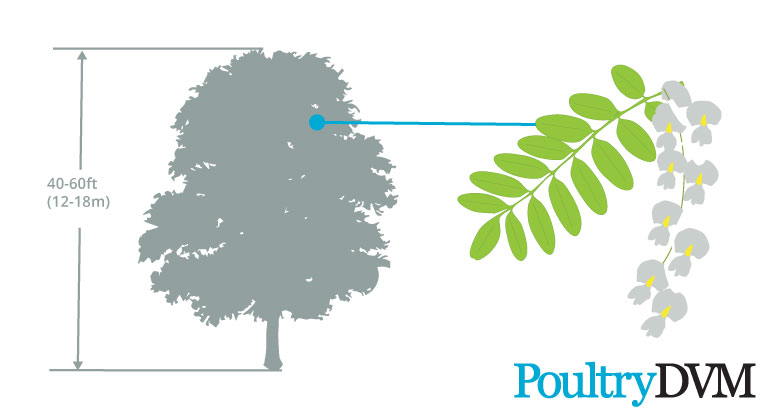Black locust (
Robinia pseudoacacia) is a fast-growing, deciduous tree. It is native to the Appalachian mountains from Pennsylvania to Alabama, and a secondary population in the Ozark Mountains, in the United States.
It is also often planted as an ornamental tree for its showy aromatic flowers and hard, durable wood.
R. pseudoacacia's dark brown bark is rough with interlaced ridges. It produces fragrant white, pink or purple flowers in drooping pea-like clusters. Its fruit pods are smooth, 2 to 4 inches long, and contain 4 to 8 seeds.
Toxic components
All parts of
R. pseudoacacia contain a number of toxins, with the most important being robin, a toxalbumin that is toxic to chickens if ingested. Toxalbumins are plant proteins that inhibit protein synthesis, and similar in structure to the toxins found in tetanus and botulinum. The toxin is particularly prevalent in the inner bark, seeds, and leaves. Ingestion of
R. pseudoacacia bark, pruned or fallen branches, and young sprouts can result in black locust toxicity in poultry. Symptoms of poisoning present one to two hours after ingestion and result from hemorrhagic enteritis.
